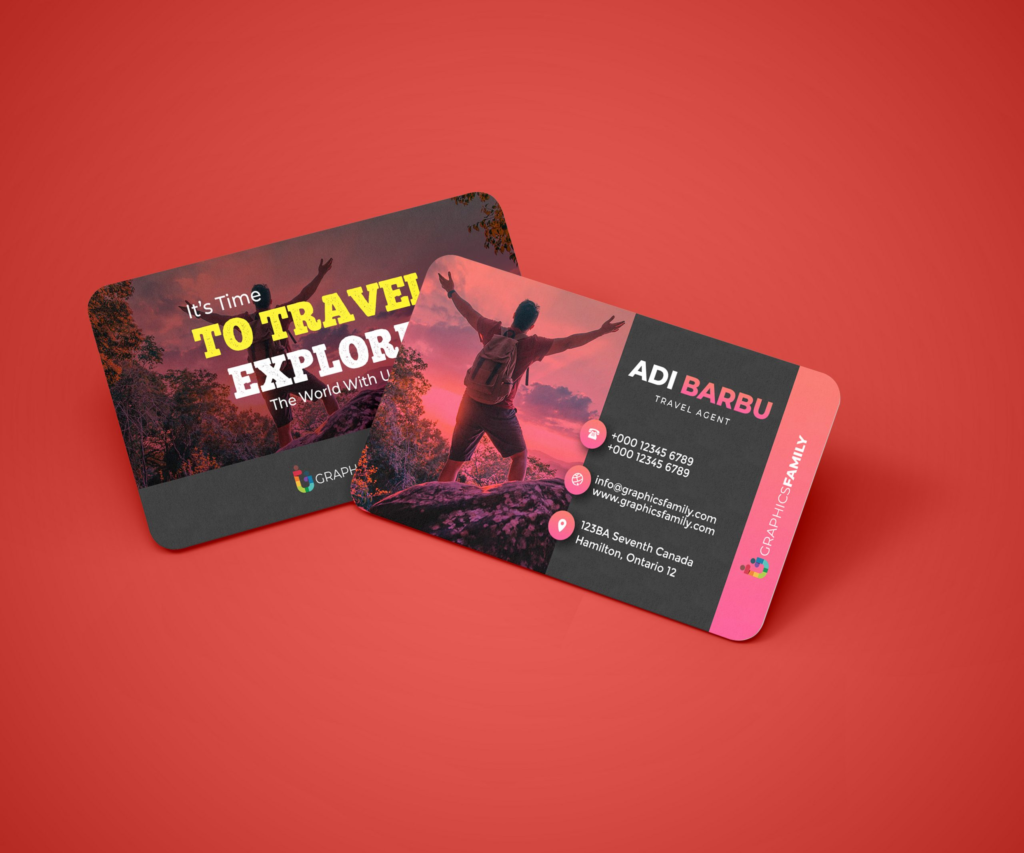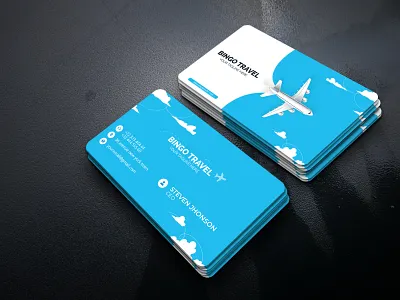In the competitive world of travel services, first impressions are everything. As a travel agent, your business card is often the first point of contact potential clients will have with your brand. A well-designed, professional business card can leave a lasting impression and help build trust with clients. On the other hand, a poorly crafted card may not convey the level of professionalism or creativity that your clients expect from a travel expert.
To ensure that your business card stands out in a crowd and serves as an effective marketing tool, here are some essential tips for crafting the perfect travel agent business cards.
1. Keep Your Design Clean and Professional
The design of your business card should be visually appealing yet simple and uncluttered. A clean design helps ensure that your card is easy to read and memorable. Focus on including essential information only and avoid overloading the card with too many graphics or text.
- Logo and Branding: Your business card should reflect your brand identity. Use your logo, colors, and fonts that align with your business’s overall look and feel. Consistency in branding is crucial for recognition and professionalism.
- White Space: Don’t be afraid of white space—it can make your card look more polished and less crowded. White space helps highlight the key information and makes the card visually appealing.
A professional, straightforward design will show potential clients that you take your work seriously and care about the details, even in something as small as a business card.
2. Include the Right Information
While a business card should be concise, it still needs to contain all the necessary details for potential clients to contact you easily. Here’s what you should include:
- Name and Title: Your full name and professional title (e.g., Travel Agent, Travel Consultant, Vacation Specialist) should be clearly displayed. This helps clients identify who you are and your role.
- Contact Information: Make sure to include multiple ways for clients to reach you, including:
- Phone number (preferably a direct line or mobile number)
- Email address
- Website (if applicable)
- Social media profiles (LinkedIn, Instagram, Facebook, etc., if you actively use them for your business)
- Business Address (if relevant): If you have a physical office, including the address is helpful. However, if you work remotely or do not have a storefront, this may be unnecessary.
- Tagline or Specialization: If you have a specific niche (e.g., luxury travel, family vacations, adventure trips), adding a brief tagline can help clients immediately understand your expertise.
Remember, less is more. Prioritize the most important information and ensure that the card isn’t overcrowded.
3. Choose a High-Quality Material
The quality of your business card material speaks volumes about your professionalism. A flimsy, cheap card may convey the wrong message, while a sturdy, high-quality card will reflect positively on you and your business.
- Paper Quality: Choose thick, high-quality paper that feels substantial to the touch. A quality card will feel premium and give clients a sense that they’re dealing with a top-tier travel expert.
- Finish Options: Depending on your brand, you may opt for a matte, glossy, or textured finish. Matte finishes tend to look more understated and professional, while glossy finishes can make the colors and images pop. A textured finish can also add a unique touch.
- Eco-Friendly Options: As sustainability becomes more important to many clients, consider using eco-friendly paper or materials for your cards to make a positive impression.
The feel of your business card is an often-overlooked aspect, but it’s an important one. A well-made card enhances the overall perception of your brand and can even help differentiate you from the competition.
4. Utilize Both Sides of the Card

While one side of the business card usually features your name and contact information, don’t be afraid to use the other side creatively. The back of your card provides an opportunity to include additional information or design elements that make your card stand out.
- Promotional Offers: You can include a short, compelling offer or discount for first-time clients (e.g., “10% off your first trip with us!”).
- Map or Destination Photos: Adding a beautiful image of a destination or a map highlighting your specialization (e.g., exotic vacations, cruises, or European tours) can evoke excitement and attract potential clients.
- Testimonials: Including a short quote or testimonial from a satisfied client adds credibility and helps establish trust.
- Social Media Links: If you use social media to showcase your travel experiences or client successes, you can list your social media handles on the back of the card.
By utilizing both sides, you can fit more valuable information onto the card without overcrowding the front side.
5. Make It Memorable with Unique Design Elements
While a professional design is important, you also want to make your card stand out in a sea of plain, forgettable cards. Adding unique design elements can help make your business card memorable and serve as a conversation starter.
- Creative Layout: Play around with the layout to make your card distinctive, but still readable. Consider unusual shapes or sizes (e.g., square cards or foldable cards) if it fits your brand.
- Bold Colors or Fonts: Experiment with bold colors or fonts that align with your branding. However, be careful not to go overboard—ensure that the card still maintains legibility and a professional feel.
- Textures and Finishes: As mentioned earlier, using different textures (e.g., embossed text or foil stamping) can add sophistication and make your card feel unique and luxurious.
Think of your business card as a mini portfolio of your travel services. Use design elements that reflect your personality and style as a travel agent.
6. Keep Your Target Audience in Mind
Always design with your target audience in mind. Think about the kinds of clients you want to attract and how your business card can appeal to them. For example:
- Luxury Travelers: If your focus is on high-end luxury travel, your business card should reflect that with elegant, premium materials, and a polished design.
- Adventure Travelers: For clients seeking thrilling, off-the-beaten-path experiences, a vibrant, bold card with action-packed imagery could resonate more.
By aligning your card design with your target market’s preferences, you’ll immediately capture their attention and demonstrate that you understand their needs.
Conclusion: Your Travel Agent Business Card as a Powerful Marketing Tool
Your business card is more than just a piece of paper with contact information—it’s a powerful tool for building your brand and making a strong first impression. By following these essential tips, you can create a business card that represents your expertise as a travel agent while standing out from the competition. Remember to keep it professional, clear, and memorable, and use it as a way to convey the passion and dedication you have for helping clients create unforgettable travel experiences.



